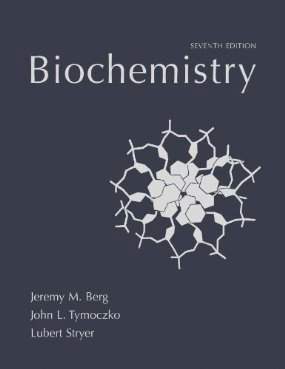Connecting...

For more information, please see full course syllabus of Biochemistry
Biochemistry The Biologically Active Lipids
While many lipids are used in cell membranes or as long-term fuel storage, some lipids play a more active, mobile role in biochemistry. Phosphatidylinositol can be activated by an extracellular stimulus, which causes it to be phosphorylated, turning it into phosphatidylinositol 4,5-biphosphate (PIP2) using some of the phosphate groups from ATP. This is then hydrolyzed into IP3 (inositol triphosphate) which is released into the cytosol, prompting the release of calcium from the endoplasmic reticulum (the diacylglycerol remains in the membrane). The calcium activates kinase C, which bonds to the diacylglycerol still in the membrane, activating another process. So this lipid is the beginning of a cell signaling pathway. Other biologically active lipids are called eicosanoids (paracrine hormones like prostaglandins), steroid hormones, and fat-soluble vitamins (A, D, E, and K).
Share this knowledge with your friends!
Copy & Paste this embed code into your website’s HTML
Please ensure that your website editor is in text mode when you paste the code.(In Wordpress, the mode button is on the top right corner.)
- - Allow users to view the embedded video in full-size.










































 Answer Engine
Answer Engine




1 answer
Fri Mar 23, 2018 6:41 PM
Post by Swati Sharma on March 23, 2018
Dear Dr Rafi
Do you have lectures on Membrane Transport? and Signal Transduction Pathways as we are doing those chapter in class.
0 answers
Post by peter alabi on April 10, 2017
Hi, prof. Raffi,
Am just a little curious, and the following question may seem a little stupid.
1) knowing the fat soluble vitamins like ADEK are not water soluble, is it reasonable to ingest less of this set of vitamins as compare to water soluble vitamins, which probably get dissolve and excreted out easily?
2) In the previous lesson, you mentioned how the classes of galactolipids are found in the plants. I took the obligation to do some research, and one of the articles that I read postulated that plant uses the galactolipid to conserve phosphate for more rather important usage. Does this idea seem logical, if so, how come higher organism like vertebrates doesn't utilize a similar mechanism, I mean we need a constant supply and usage of phosphate more than plants?
3) During transformation process of e.coli in my biology lab, we used a competent cell for higher transformation efficiency, and I read that this e.coli can be made competent by two methods, using divalent cation or electroporation, first if you don't mind explaining how this technique works in terms of the lipid bilayer.
And lastly, I think that using either divalent cation or electroporation is rather expensive, wouldn't it be better to introduce the cell to like a cold environment to facilitate the lipid bilayer to gel/solid phase, and then make some sort of incision in the cell membrane? kinda sound stupid I know.
4) Archean cell membrane lipid bilayer differ from both bacteria and eukaryotes in that they have ether linkage as compare to ester linkage, and secondly, they have L-glycerol as compare to D-glycerol in prokaryotes and eukaryotes, evolutionarily speaking would you say it significant? and does some of this structural differences account for why Archean are mostly extremophile?
Thank for the great lecture.